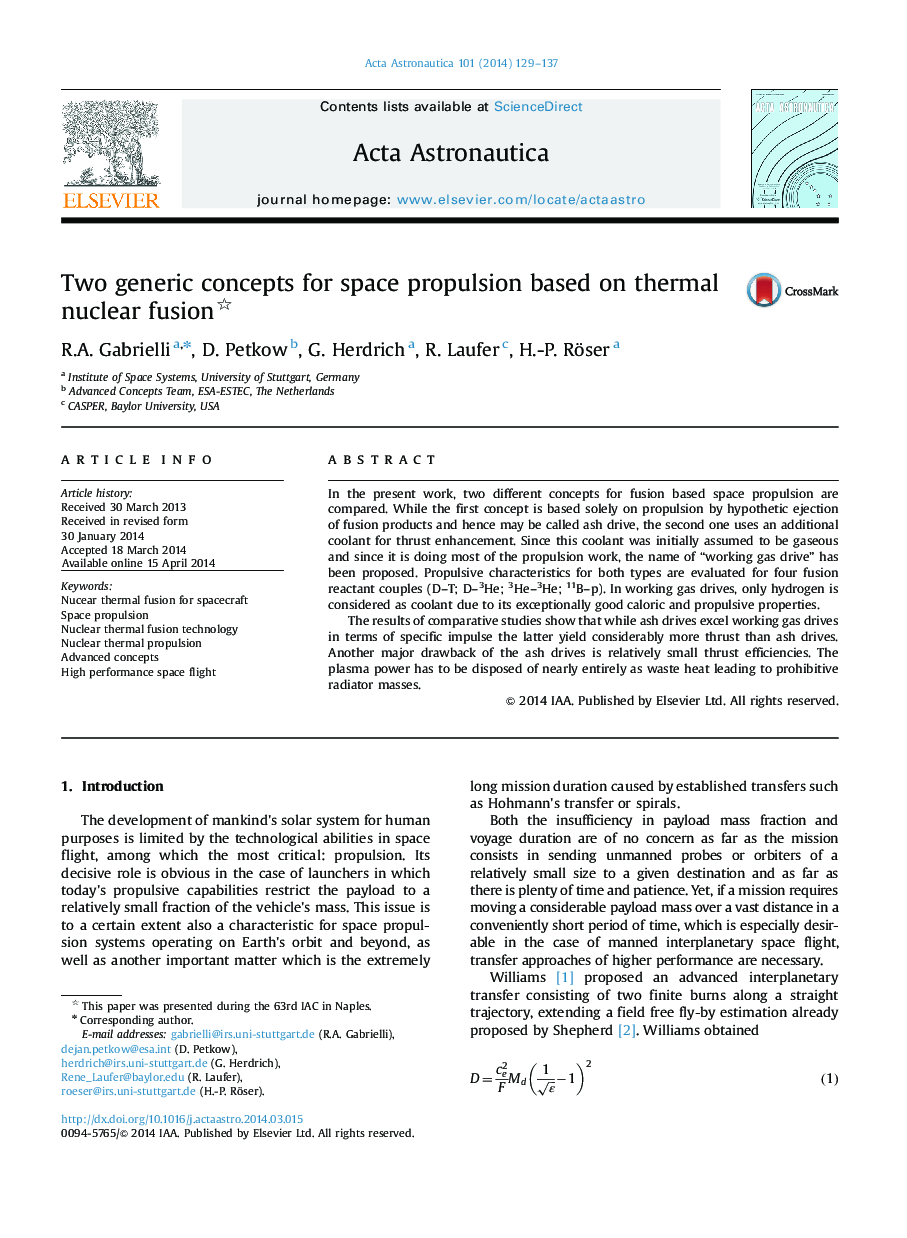| Article ID | Journal | Published Year | Pages | File Type |
|---|---|---|---|---|
| 1714632 | Acta Astronautica | 2014 | 9 Pages |
•Engineering modelling of magnetically confined fusion propulsion.•Two different approaches: ash drives and working gas drives.•Respective system mass modelling assuming linear scaling laws.•Application of the models to four major fusion reactant couplings: D–T, D–3He, 11B–p and 3He–3He.•Discussion of the results and estimation of potential missions.
In the present work, two different concepts for fusion based space propulsion are compared. While the first concept is based solely on propulsion by hypothetic ejection of fusion products and hence may be called ash drive, the second one uses an additional coolant for thrust enhancement. Since this coolant was initially assumed to be gaseous and since it is doing most of the propulsion work, the name of “working gas drive” has been proposed. Propulsive characteristics for both types are evaluated for four fusion reactant couples (D–T; D–3He; 3He–3He; 11B–p). In working gas drives, only hydrogen is considered as coolant due to its exceptionally good caloric and propulsive properties.The results of comparative studies show that while ash drives excel working gas drives in terms of specific impulse the latter yield considerably more thrust than ash drives. Another major drawback of the ash drives is relatively small thrust efficiencies. The plasma power has to be disposed of nearly entirely as waste heat leading to prohibitive radiator masses.
